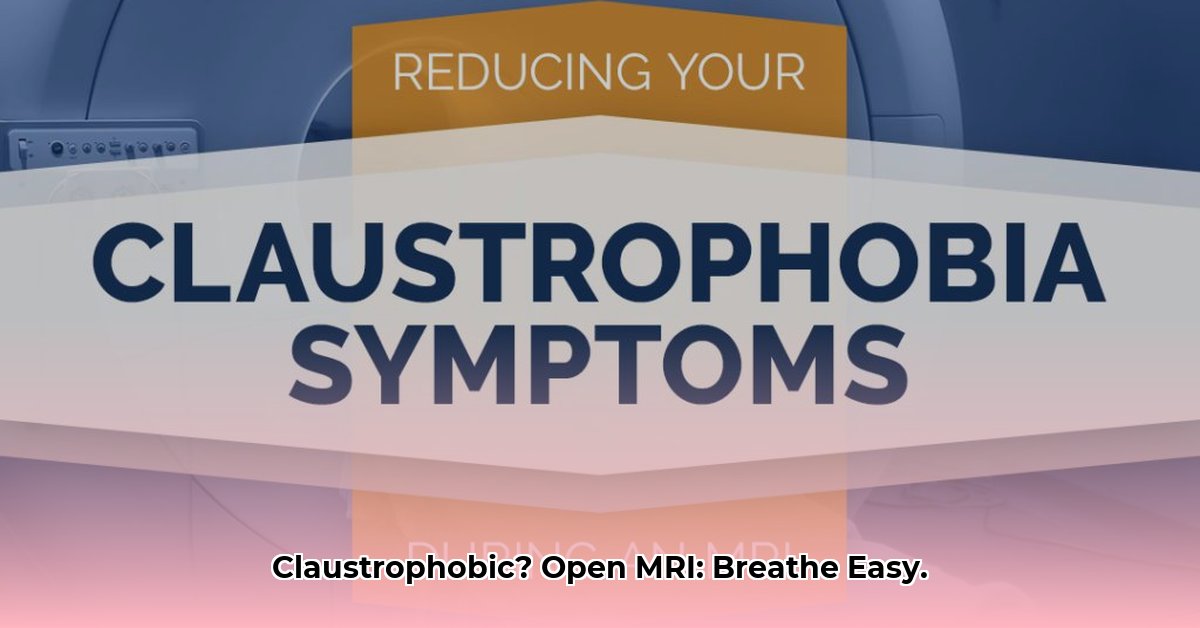Do you feel anxious about the prospect of an MRI? You’re not alone. Many individuals experience claustrophobia, and the thought of lying inside a traditional MRI machine can be daunting. Thankfully, open MRI offers a less confining and more comfortable alternative. This guide provides everything you need to know about open MRI, from its benefits and types to coping strategies and cost considerations.
Understanding Open MRI
Open MRI machines offer a breath of fresh air for those who fear enclosed spaces. Unlike traditional closed MRIs, which resemble a narrow tube, open MRI machines have open sides, often shaped like a large “C.” The magnets are positioned above and below you, creating a much less restricted feeling.
Types of Open MRI
Not all open MRI machines are created equal. They vary in “field strength,” which impacts image quality.
- Low-field open MRI: These machines may take longer to complete a scan and might not produce images as detailed as high-field systems.
- High-field open MRI: These machines produce images comparable in clarity to those from traditional closed MRIs, offering a better balance between comfort and image quality.
- Upright open MRI: This type allows you to be scanned while sitting or standing, which can be especially helpful for diagnosing certain conditions where weight-bearing positions are important.
Comparing MRI Options
Choosing the right MRI depends on your individual needs and the specific medical situation. Here’s a comparison of open, closed, and wide-bore MRI:
| Feature | Open MRI | Closed MRI | Wide-Bore MRI |
|---|---|---|---|
| Enclosure | Open sides | Fully enclosed | Wider opening than closed |
| Claustrophobia | Best option | Most challenging | A good compromise |
| Image Quality | May be lower (low-field) | Highest | Comparable to closed |
| Scan Time | Can be longer (low-field) | Shortest | Similar to closed |
| Comfort | Most comfortable | Least comfortable | More comfortable than closed |
| Availability | Less common | Most common | Increasingly available |
| Noise Level | Can be less noisy | Can be quite loud | Similar to closed |
Locating an Open MRI Facility
Finding an open MRI facility is often straightforward. Start by talking with your doctor, who can likely recommend local options. You can also use online search engines or directories specializing in medical imaging services. When calling facilities, inquire about the type of open MRI machine they use (low-field, high-field, upright), as this can impact image quality and your overall experience.
Coping with MRI Anxiety
Even with an open MRI, some anxiety might persist. Here are some strategies to manage it:
- Deep Breathing: Practice slow, deep breaths to calm your nervous system before and during the scan.
- Visualization: Imagine yourself in a relaxing environment to shift your focus away from the procedure.
- Music: Many facilities allow you to listen to music during the scan. Ask about their policy beforehand.
- Communication: Talk to the MRI technician about your concerns. They can offer reassurance and practical tips.
Sedation for MRI
For severe claustrophobia, sedation may be an option. Discuss this with your doctor to determine if it’s appropriate for you. Sedation levels range from mild relaxation to deeper sedation, and the choice depends on your medical history and the specific MRI procedure. Remember that you’ll need someone to drive you home after sedation. Types include:
- Mild Sedation: Relaxes you without causing significant drowsiness. You remain awake and responsive.
- Moderate Sedation (Conscious Sedation): You’ll be drowsy and relaxed but still aware of your surroundings. You likely won’t remember much afterward.
- Deep Sedation: You’re essentially unconscious during the procedure. This is typically reserved for complex cases.
Alternative Imaging Techniques
While MRI often provides the most detailed images for certain diagnoses, other imaging methods – such as CT scans and ultrasounds – may be suitable depending on what your doctor needs to evaluate. Discuss these alternatives with your doctor if claustrophobia prevents you from undergoing an MRI. Ongoing research continues to refine these techniques and may lead to additional options in the future.
Costs and Insurance
The cost of an open MRI varies depending on several factors including the type of machine, the facility, and the type of insurance you have.. It’s always recommended to check with your insurance provider to understand your coverage and any potential out-of-pocket expenses.
Frequently Asked Questions
-
Is open MRI as accurate as closed MRI? High-field open MRI produces images comparable to closed MRI for many diagnostic purposes. Low-field open MRI may have limitations in specific cases.
-
Will I hear anything during the scan? Yes, MRI machines generate noise. Most facilities provide earplugs or headphones to minimize this.
-
How long does an open MRI take? Scan times vary depending on the area being scanned and the specific machine used. Your technician can provide a more accurate estimate.
Conclusion
Open MRI and coping strategies make essential medical imaging accessible to individuals with claustrophobia. Communicate openly with your doctor about your concerns to determine the best approach for your individual needs. Remember, your comfort and well-being are priorities.
Important Note: This information is for educational purposes and should not replace professional medical advice. Always consult your doctor for any health concerns or before making medical decisions.
- Vertical Axis Wind Turbine Design: Improving Efficiency and Overcoming Limits - October 29, 2025
- Wind Turbine to Power Home: Nacelle Design Improvements Advance - October 26, 2025
- Wind Turbine Blade Length: How Long Is Too Long? - October 24, 2025
















